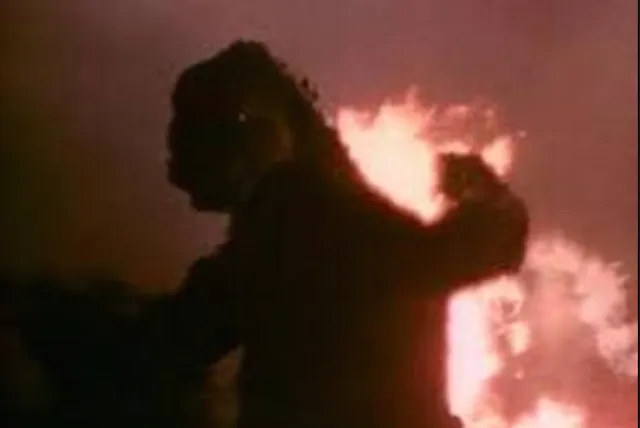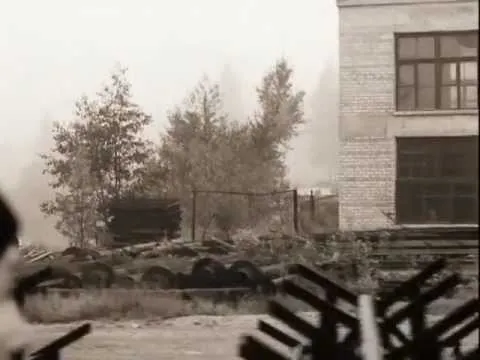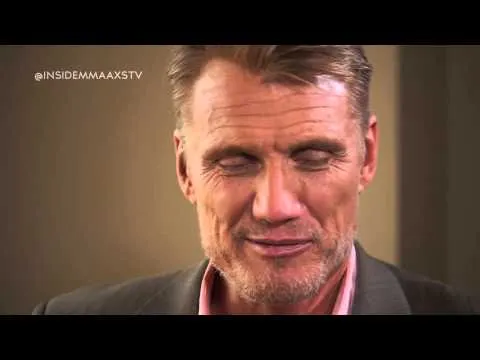There’s something that seems to continue to please audiences and critics about the thought that, at some point in a film, TV show, or other production, something that normally would be faked to make it easier and safer for the actors was not simulated. Real danger because the actors got too into performing the scene. Stunts gone wrong. Or, just extremely unsafe working conditions in general. Maybe it’s because it makes the fantasy of movies more real in some way, or because it gives the performers more of a freak show appeal. Whatever the case, no matter how much publicity it’s good for, this sort of thing should not be celebrated.
10: Raging Bull
This 1980 boxing film is widely regarded as the magnum opus for both star Robert DeNiro and director Martin Scorsese. Beyond a few famous conversations that can’t be quoted here because this is a family friendly site, it features truly harrowing boxing sequences that took much of the mystique out of boxing with their bloodshed, along with intense sound effects and editing. But according to Scorsese on the commentary track, those weren’t the scenes of the worst, real violence. No, the most violent scene was a shot that would not be particularly memorable to anyone but Joe Pesci.
Early in the movie, Jake LaMotta (DeNiro) and his brother are training in a boxing ring. Some scouts stop by that Pesci’s character (the brother) invited without Jake’s permission, and so Jake begins to violently beat his brother out of rage, unintentionally impressing the scouts. Scorsese said that even with all the boxing featured in the rest of the movie, the only serious injury takes place in this scene. One of DeNiro’s body shots was so hard that despite Pesci wearing pads, DeNiro still broke one of his ribs. Good lesson in there for overzealous aspiring boxers.
9: This is the End
This 2013 movie was undeniably, on paper, mostly an excuse for Seth Rogen to hang out with his friends as he cut his teeth as a feature film director. In it, he and his costars (including Jonah Hill, Craig Robinson, and James Franco) don’t even play characters as they experience basically the Judeo-Christian apocalypse, complete with demons roaming the Earth and people ascending to heaven. Naturally it’s more edgy and extreme than the average comedy, with demons walking the Earth and many of the cast members dying. But once again, the scene of real violence is not the kind of scene any director would think requires method acting.
Michael Cera’s reputation in Hollywood at the time was that of an extremely nice person, so of course in the film he plays an insufferable jerk. During an early scene he gropes singer Rihanna. For his troubles, he gets slapped. As enthusiastically reported by writers Rogen and Evan Goldberg, the slap to his ear was real. Rihanna cupped her hand when she did it, and it was painful enough that Cera was basically left dizzy, but he carried on with the scene anyway. Given Rihanna’s unfortunate and highly publicized history of suffering domestic violence, it seems possible that the slap was due to very unpleasant past experiences.
8: Terror of Mechagodzilla
godzilla

For awhile in the 1960s and 1970s, the infamous nuclear lizard Godzilla somehow went from being portrayed as just a menace to society to a defender against other monsters. A significant part of the thinking behind this was to make a premise that’s very hard to take seriously a bit more fun, and thus more kid-friendly. That in mind, Terror of Mechagodzilla from 1975 was a particularly odd movie from this period, being much more graphically violent than any adult would have considered suitable for children at the time. It included elements like a suicide among the main human characters, and during a protracted fight scene with two other monster Godzilla had blood spraying out of his neck. This unusual tone is largely explained by the fact it was directed by Ishiro Honda, who directed the original, serious Godzilla movie.
By far the most remembered scene in the movie, though, is one where Godzilla is hit by such a barrage of missiles and lasers that it becomes a storm of pyrotechnics. It’s notorious among Godzilla fans because the Godzilla costume accidentally caught fire. Given that you couldn’t see the face of the actor inside that suit (which weighed dozens of pounds) as it burned up, it’s hard to believe that his catching fire contributed anything to the performance.
7: Stalker
While it wasn’t famous enough to get an American remake like the director’s Solaris, Andrei Tarkovsky’s Stalker is still rated one of the all-time classics of world cinema. The rather surreal story: some sort of alien object has landed in an area now called The Zone, which three men must sneak inside to get literally whatever they want, an obvious but still powerful metaphor for how so many millions of people wanted to sneak across the Iron Curtain. Much less obvious was the irreparable harm that the shoot inflicted on all involved.
Even as they shot scenes where the main characters (the Stalker, the writer, and the science professor) are dangerously approaching an alien world, Stalker’s cast and crew were exposing themselves to all sorts of dangerous substances. The film was largely shot at a chemical plant outside the Estonian capital of Tallinn. The cast and crew were so poisoned by the shoot that within seven years, illnesses brought on by the shooting location killed both the lead actor and the director. The sort of suffering for their art that no one should endure.
6: Pi
Indie movies like Pi, especially back in the ’90s, often had to have some crazy aspect to help sell the movie. Clerks, for example, was funded by Kevin Smith maxing out his credit cards. El Mariachi was financed by Robert Rodriguez subjecting himself to medical testing, and so on. Pi was able to launch the career of Black Swan and Noah director Darren Aronofsky without any kind of crazy story like that at all. It’s craziest story was only a poisoning.
During this surreal techodrama about a man looking for stock market patterns while several potentially dangerous factions pursue him, there is a scene where protagonist Max Cohen (Sean Gullette) sees that some sort of organic matter has formed around the edges of his computer. For this scene, Aronofsky and Gullette were told that he had to make sure to keep the substance completely out of his mouth because it would be highly toxic if ingested. Aronofsky and Gullette shared a wink. During the shoot, Gullette not only put the dangerous substance on his tongue, but Aronofsky proudly pointed out later how he left a string of saliva between his finger and tongue. Surely, that was what helped make the movie such an indie hit.
5: Rocky IV
These days, this film is primarily considered campy, cheesy, and uncomfortably jingoistic with how heroic the American boxers are and how comically villainous Ivan Drago’s character is. Certainly its boxing sequences are generally considered less harrowing by audiences than Raging Bull’s, but this movie had a more terrifying and dramatic case of unsimulated violence take place during its production than Scorsese’s film did.
During their boxing scenes, Sylvester Stallone instructed Dolph Lundgren to not pull his punches in an unusually literal sense. Lundgren did as he was told and as a result, Stallone had to spend days in the hospital in intensive care after blows that the creator of the Rocky series claimed compressed his spine. According to Lundgren in the above interview, he didn’t know he’d done nearly so much harm to Stallone until the production company told him he could have a two week vacation. This did not knock the desire to overdo fight scenes out of Stallone, and during the shoot for his later film The Expendables one such scene ended with Steve Austin injuring his neck so badly that he had a plate placed in it.
4: The Evil Dead
shotgun

Anyone who has enjoyed the recent Ash Vs. Evil Dead series owes it to themselves to check out the 1982 indie horror film that started the series. It has become the stuff of horror fan legend how the actors underwent grueling, dangerous conditions, particularly when they were on camera, including knife fights where the person with the knife couldn’t see. But director Sam Raimi saved the single craziest, most dangerous ordeal for himself.
In the second half of the movie, the main character, Ash, is alone with a shotgun and his nerves are dangerously frayed. He hears something outside and fires out the window. Raimi admits with embarrassment on the commentary track that he set up the shot so that Bruce Campbell had to fire a live round towards the camera, which was right near where he was standing. Rather than do something as sensible as change the camera angle, he just told Campbell to aim higher for a second take. That’s the surest sign of an inexperienced director: putting himself in danger instead of the actors.
3: Deep Blue Sea
Widely dismissed as just a ludicrous variation on Jaws where sharks are artificially made more intelligent for Alzheimer’s research, Deep Blue Sea is mostly remembered for an outstanding, surprising scene involving Samuel L. Jackson. Jackson himself, however, was quite surprised by another scene. It was the scene where he and nearly the whole cast were endangered.
During a storm sequence, four of the main characters are trying to run inside the base. Artificial waves were supposed to crash ahead of and behind them, but during one shot, thousands of pounds of waters were miscued and the cast was hit when they really weren’t supposed to be and had no safety equipment. The cast members were nearly sent off the platform where, considering the torrent of water and the lack of safety equipment, they could very well have been in real danger. Jackson was taken aback that a shot of the cast in danger was actually included in the movie.
2: Whiplash
In 2015, J.K. Simmons turned bullying into an art form with his Academy Award-winning, brilliant portrayal of the jazz teacher Fletcher in Whiplash. The film also connected with audiences, too, considering that users on IMDb have voted it #45 on their list of the 250 best movies of all-time. Simmons and his insanely driven student, played by Miles Teller, both pushed themselves extremely far for the 19 day shoot. Even though most of the movie is about slow burning emotional manipulation, it culminated in quite a physical climax.
During the scene in question, Teller’s character, Andrew, finally snaps after incredible pressure and abuse (much of it self-inflicted) and runs up and tackles Fletcher. Simmons didn’t bother with any pads, and like Joe Pesci paid the price when Teller hit him so hard that the tackle broke two of his ribs. That he was able to continue with the scene regardless just went to show how committed Simmons was to the role, although it probably wouldn’t have hurt his performance to cushion the blow a little bit.
1: The Princess Bride
Some actors are willing to undergo considerable danger for their performances, or to continue acting despite being in considerable pain. For this classic family fantasy from 1987, which is still very often quoted, Cary Elwes took it to another level entirely. He paid the price for it too, presumably to a greater extent than he expected.
In one scene, Westley and Buttercup (Robin Wright) are set upon by a group of soldiers that intend to take Buttercup and force her into marriage with their leader. It ends with Christopher Guest (as the six-fingered man) bashing Westley on the head with the butt of his sword. Director Rob Reiner explained that not only did Guest hit Elwes for real, resulting in him having to go to the hospital and closing down production, but Elwes had been insisting that Guest hit him for real. Just goes to show, no matter how tough you think you are, it simply isn’t a good idea to ask people to really hit you.







